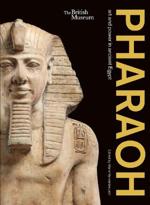The rulers of ancient Egypt were not always male, nor always Egyptian. At times, Egypt was divided by civil war, conquered by foreign powers or ruled by competing kings. While some kings were revered – such as Thutmose III who expanded Egypt’s empire to its largest extent – the memory of others was officially erased. Many of the objects surviving from ancient Egypt project the image the pharaoh wanted us to see – however this book explores the reality and the many challenges of ruling one of the greatest civilisations the world has ever seen. After an introduction into the historic and geographic timeframe of the ancient Pharaohs, the book explores royal iconography, decoding the insignia worn and held by the king, or the names and titles covering most royal monuments. The core of the book investigates the main roles of the king, as high priest, as the head of the royal family, as the administrative ruler of the country and as the leader of the army and diplomat. Following an investigation into the preparation for the king’s eternal life, from the rituals to the building of a tomb, the book closes on a contemporary perspective from Egypt and how the notion of the Pharaoh still resonates today.

Pharaoh : art and power in ancient Egypt
ISBN: 9780714191317
Format: Paperback
Publisher: The British Museum Press (ADS)
Origin: GB
Release Date: August, 2024


